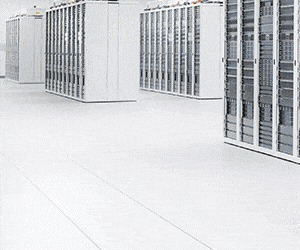This use case creates delight for our customers because if a WoW goes down, a tech will appear and fix it without being called. It feels like magic. This level of insight also prevents emergency situations such as a nurse waiting to call the service desk until several WoWs are unavailable, leading to an impact on clinical workflows and patient care.
Another use case we’re working on involves battery life. With observability, IT teams can tap into charging stations to find out when a battery is decaying and in need of replacement. The hospital can set the system to automatically create a ticket when the battery is down to only 20% of its remaining life. You can also go a step further and have it order a new battery, from CDW for example, through ServiceNow.
Those are basic use cases, but they’re very helpful. The easier we can make it for our customers and their clinicians to do their jobs, the easier it is for them to create a better care environment for their patients.
The Role of Artificial Intelligence in Observability
Pairing AI with observability enables healthcare IT teams to scour a network and see how data is flowing. If it starts bottlenecking somewhere, the team can predict the failure before it happens and either fix the issue or fail over to a redundant system until the issue is resolved.
AI has allowed observability to move to the forefront because we now have software systems, AI engines and machine learning predicting failure. AIOps does the causation and correlation across the board.
This insight makes health systems’ networks and infrastructure more reliable in case of a hardware failure, cyberattack or natural disaster. Observability helps the IT environment self-heal and prevents clinicians and patients from experiencing the impact of a system failure. While that failure may still happen, the IT team is able to at least keep the end users out of the situation by using observability. Clinicians can do their jobs without being hindered by failing IT.
READ MORE: Full-stack observability is the evolution of instrumentation technology.
Why Organizations Should Lean on a Partner for Observability
The best way to approach observability in healthcare is by looking to other industries, because it’s not yet happening in hospitals today. Observability has skyrocketed in other industries due to interest in AI.
At CDW, we’re starting to introduce observability into healthcare. We’re working with one hospital to build out a program and solution set that we can then use to help our other customers.
We’ll start with simple use cases, verify that they work and then get into more network self-healing to solve a majority of the hospital’s issues. This will become a future solution that we can provide to our customers through our ServiceNow solutions practice. Observability is a process over time, but once healthcare organizations reach a high maturity level, they’ll be able to take advantage of self-healing and prevent downtime.
If we’re able to help several hospital systems increase their reliability when it comes to uptime, that’s a big win for everybody, and for healthcare too.
This article is part of HealthTech’s MonITor blog series.












